Tessa’s Recipe Rundown
Taste: This caramel sauce is deeply rich and perfectly sweet, with just the right amount of salt for balance.
Texture: The sauce is smooth, silky, and just thick enough to cling to ice cream and other treats without running off.
Ease: This recipe is much easier than it looks, and I’ve broken it down step-by-step for a successful batch every time!
Why You’ll Love This Recipe: Homemade caramel sauce is seriously 1,000 times better than store-bought.
This post may contain affiliate links. Read our disclosure policy.
Homemade caramel recipes can feel intimidating, but I promise they’re completely doable — no candy thermometer required! In culinary school, I spent days perfecting caramel candies, so I know how fussy they can seem! That’s why I love this simple, no-thermometer method. It gives that rich, toasty flavor without the stress.
This recipe breaks the process down step by step to make it approachable and stress-free from start to finish. In just 15 minutes, a rich, luscious salted caramel sauce comes together that outshines anything at the store.
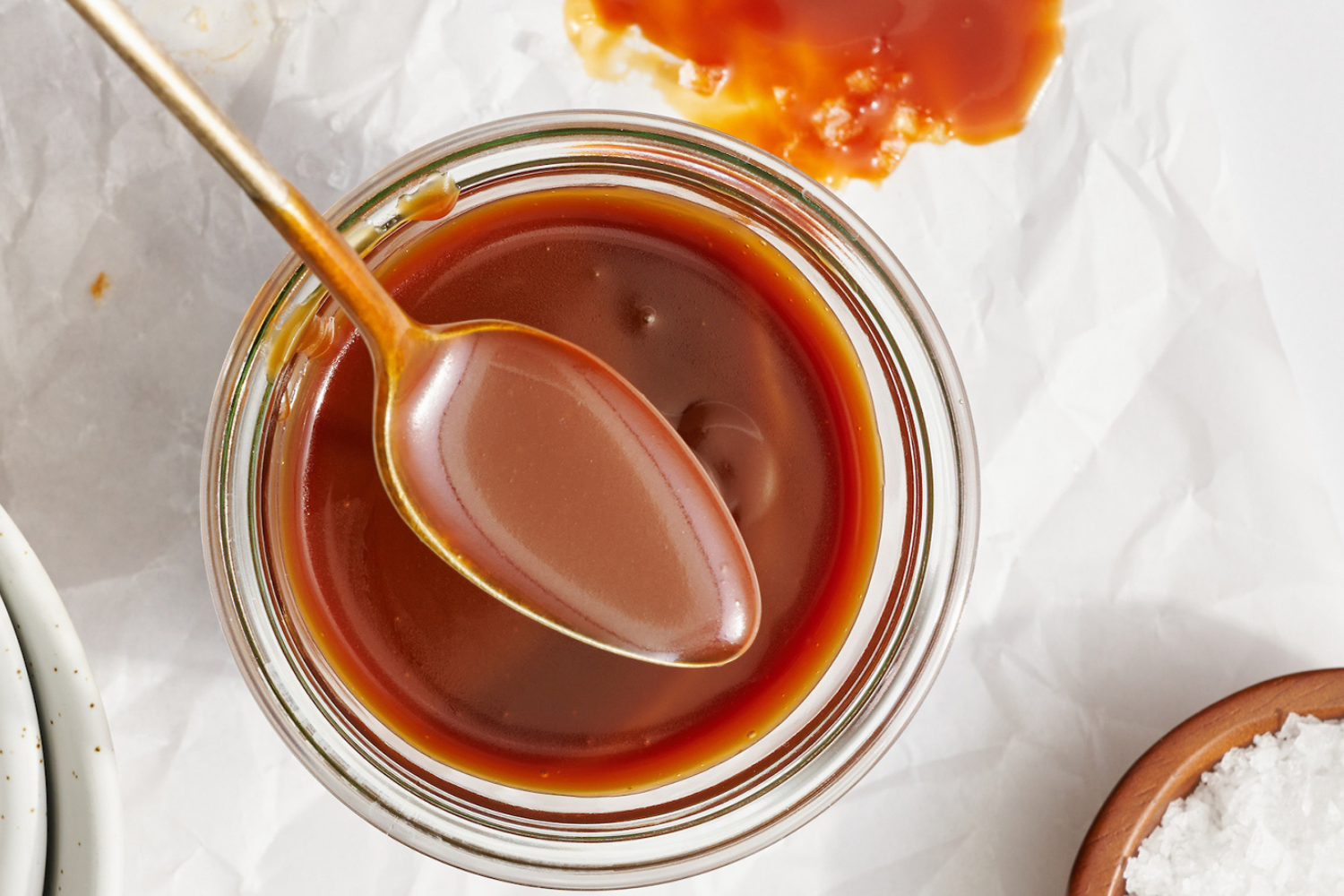
Ingredients Notes
Four simple ingredients are all that’s needed to make this easy caramel sauce. Here are a few notes before you shop:
- Granulated sugar: White sugar produces the best consistency for this recipe. Brown sugar adds extra moisture and can make the caramel thicker, darker. I prefer to use it with my homemade butterscotch and toffee bits!
- Unsalted butter: Unsalted butter gives the best control over the salt level in caramel. Salted butter can vary in saltiness, so I prefer adding a pinch at the end for salted caramel. (Or skip the salt altogether for a sweeter sauce.)
- Heavy cream: Heavy cream (or heavy whipping cream) adds richness and a smooth, pourable texture to the caramel. Its high fat content helps balance the sweetness of the sugar and butter for a glossy, silkier sauce.
- Salt: A pinch of salt balances the sweetness of the caramel and enhances its rich, buttery flavor. It also helps bring out the depth of the sugar’s caramelized notes, making the sauce taste more complex.
Reader Love
My brother and i make this caramel all the time. He makes it for his coffee. I make it for my ice cream. It is absolutely amazing. So delicious. We give it to all our friends and family and they all absolutely love it as well. Good job.
–
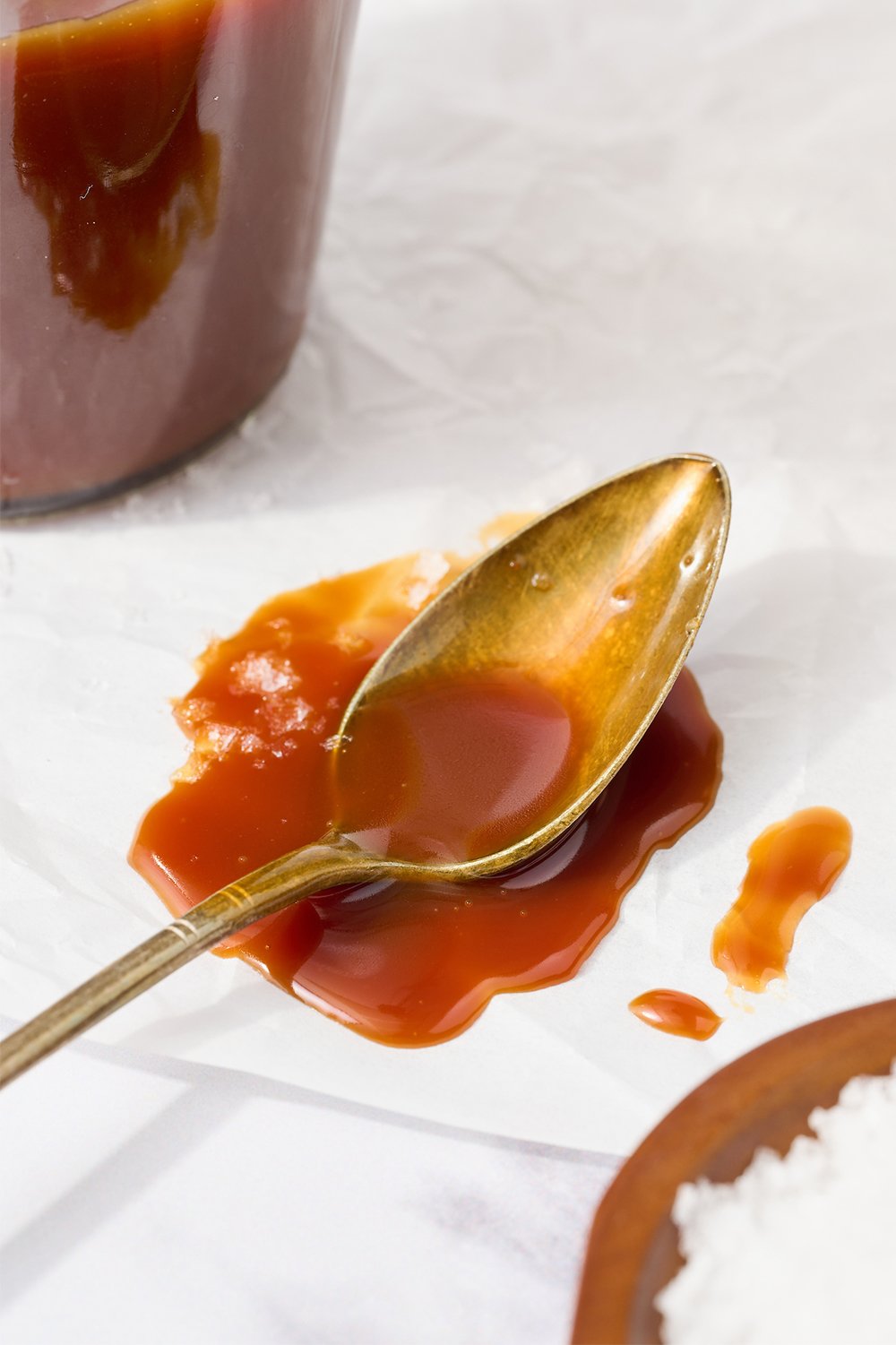

Sprinkle of Science
The Science of Caramelization
Caramel is made by melting sugar and combining it with butter and cream, sometimes with a pinch of salt, to create a rich, sweet sauce. This process is known as caramelization.
There are two basic methods of making delicious caramel: wet and dry. The basic difference between the two methods is water. Both methods heat sugar, then add fat, like butter and cream.
The wet method uses water to dissolve the sugar faster. The drawback with wet caramel is that it can create sugar crystals on the sides of the pan, which is disastrous for your caramel.
I prefer the dry method. It takes a little longer and can burn easily, but I prefer having more control over the color and flavor. Just keep a close eye on the sugar as it cooks. It’s pretty foolproof beyond that!
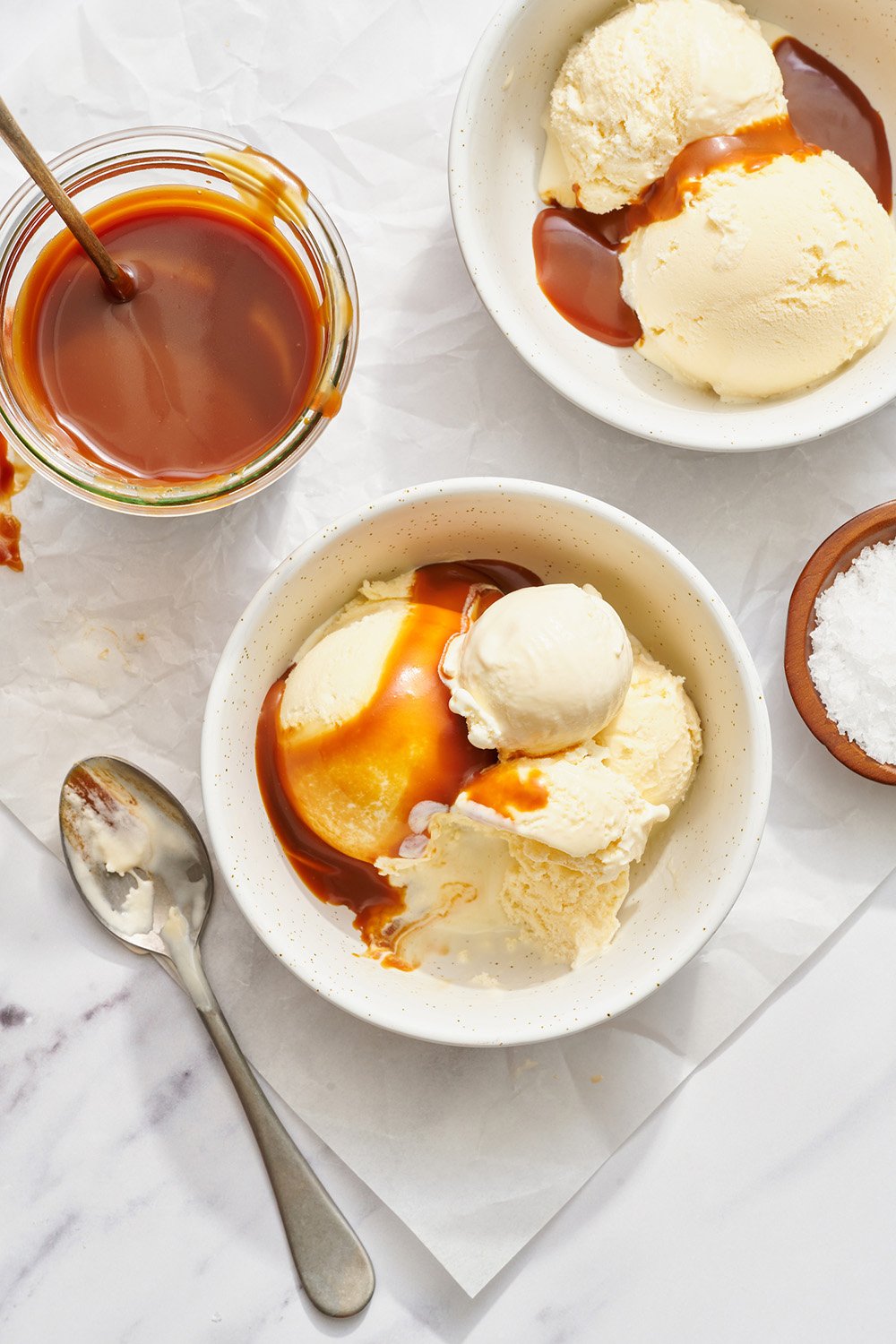
Step-By-Step: How to Make the Perfect Caramel Sauce
These easy instructions result in a soft caramel that’s far better than anything you can buy at the store. My recipe takes just 15 minutes to make caramel!
This sauce is all about the senses. Pay attention to color, smell, and texture. The perfect caramel should be amber and glossy, smell toasty and sweet, and pour smoothly from a spoon. Small temperature changes matter, so it’s critical not to rush the process.
1. Melt the sugar. Add granulated sugar to a dry, light-colored stainless steel saucepan over medium heat and watch closely as it melts. (High heat will burn the sugar!)
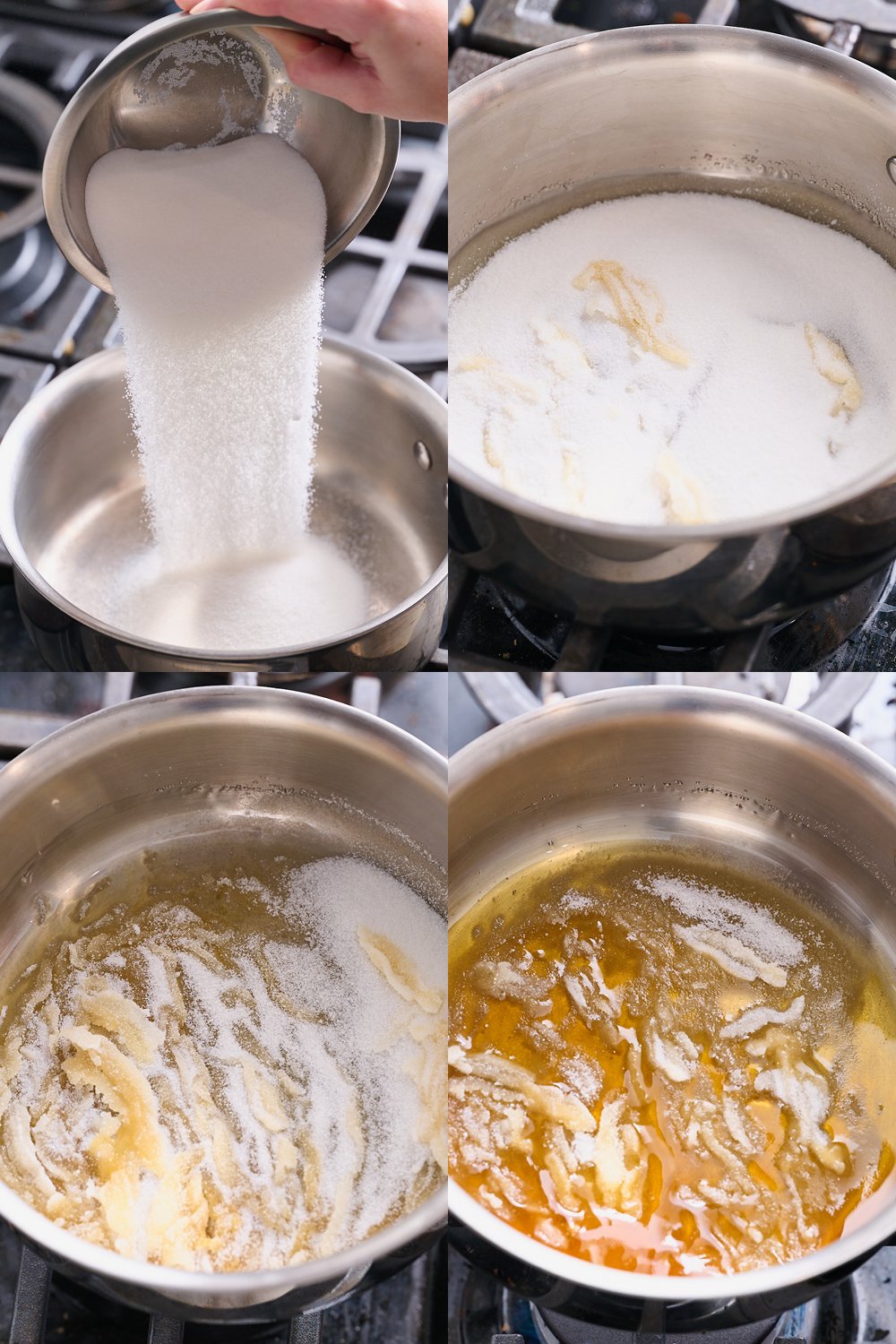
Swirl the pan occasionally to help the sugar melt evenly. The crystals should start to liquefy and turn a warm amber color. This is a sign that it’s caramelizing. This usually takes about 5 to 6 minutes.
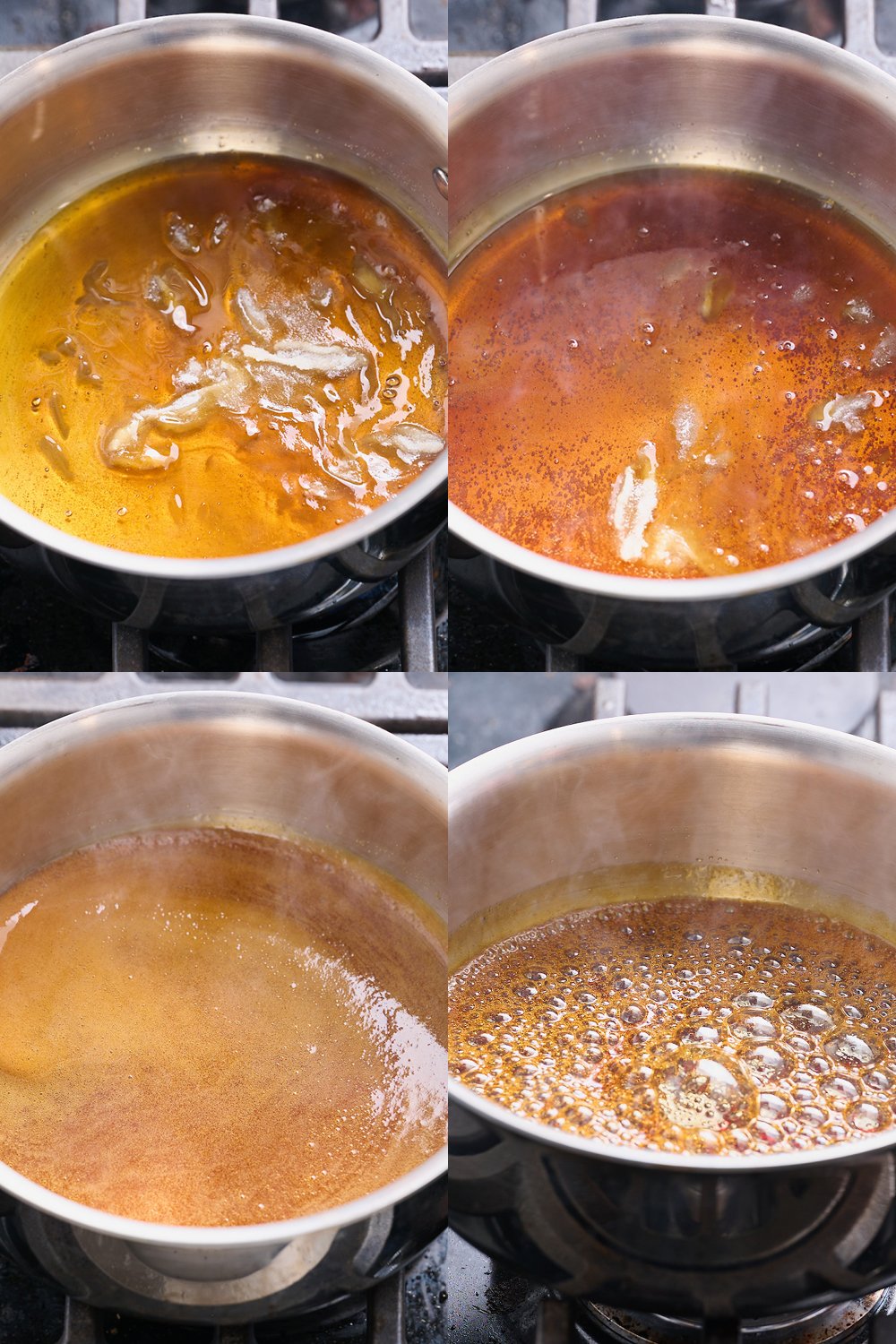
2. Add butter. After melting the sugar fully, turn off the heat and whisk in butter until incorporated.
3. Add cream. Gradually add the cream, whisking until smooth. The mixture will bubble up dramatically. The sauce should become smooth, glossy, and slightly thickened.
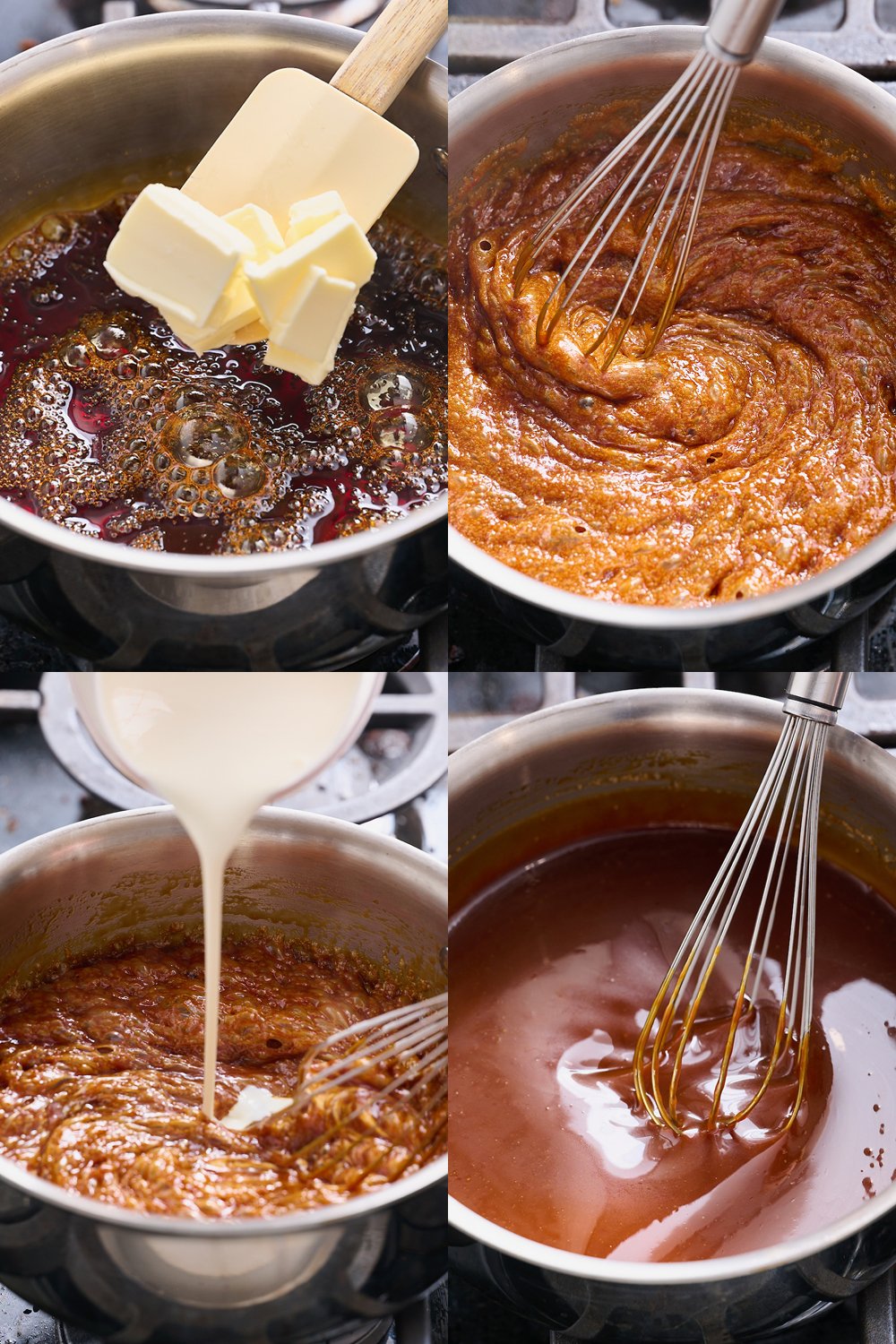
4. Troubleshooting: At this point, the caramel may seize. If clumps of sugar form — this is crystallization — continue heating over low heat until they melt back into a smooth sauce.
5. Strain the sauce. Remove the pan from the heat and pour the caramel through a fine mesh strainer into a heatproof container. This removes any stray sugar crystals for a perfectly smooth result.
6. Finish with salt (optional). A teaspoon of flaky sea salt balances the sweetness and enhances the buttery depth.
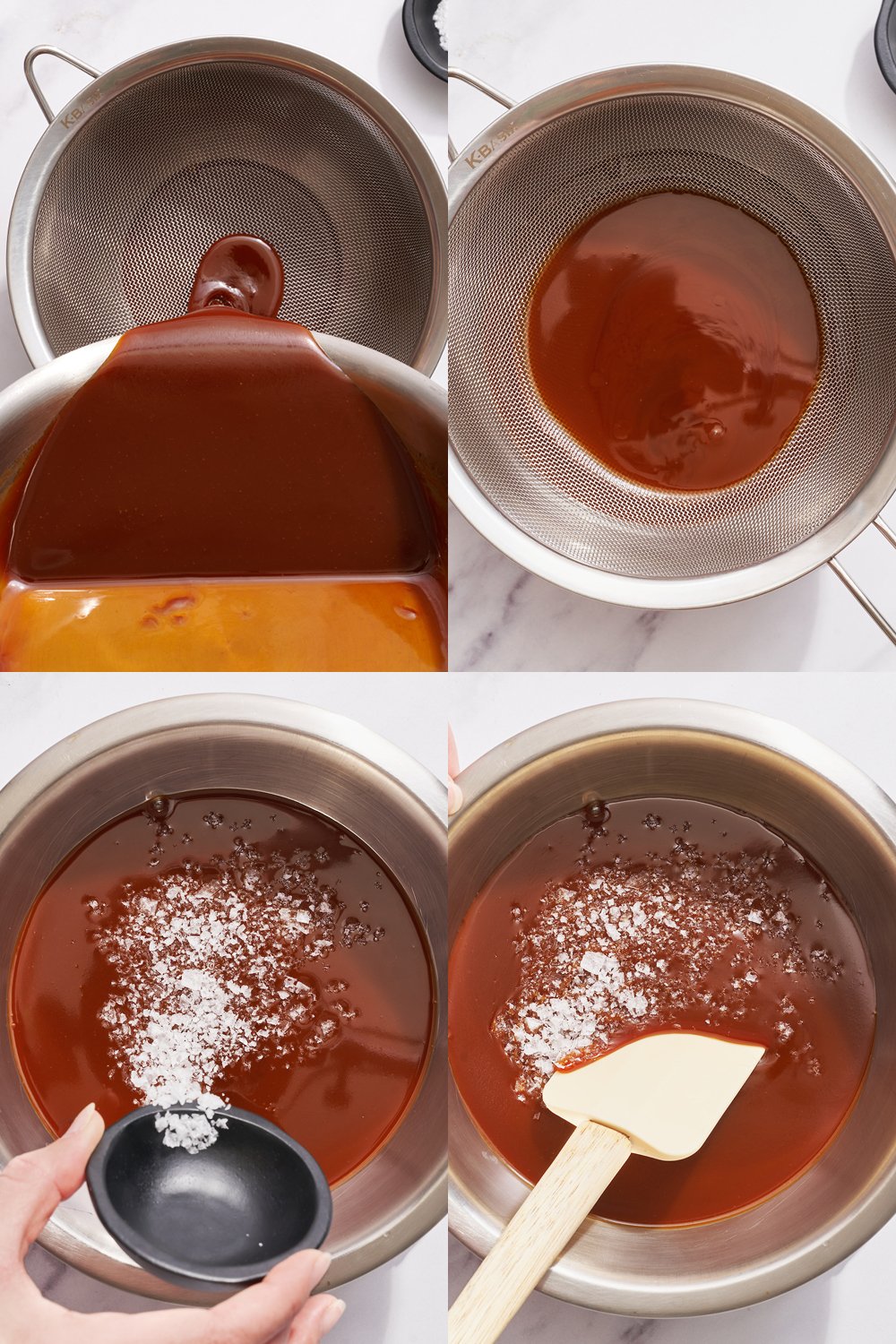
Let the caramel sit until it cools slightly and thickens, and then enjoy! For even thicker caramel, pop it in the fridge before serving.
Tips and Troubleshooting
A few simple tips and tricks can make the difference between a perfectly smooth, glossy sauce and a crystallized mess the first time and every time after.
- Use the right pan. A medium-sized, light-colored stainless steel pot works best. It heats evenly and makes it easy to see when the sugar has reached the perfect amber color.
- Stay close. Caramel can go from perfect to burnt in seconds, so it’s essential to keep an eye on it at all times, especially as the sugar dissolves.
- Swirl, don’t stir. When the sugar is melting, gently swirl the pan instead of using a utensil. This prevents sugar crystals from forming on the sides of the pot and helps avoid seizing.
- Temperature matters. Small shifts in heat make a big difference in color and flavor. Adjust the stovetop slightly if the sugar is browning too fast or too slowly for the perfect consistency.
- Use heatproof utensils. After adding the butter and cream, the caramel will bubble quite a bit. I use a wooden spoon or silicone spatula to avoid burns and prevent splatter.
- Saving seized caramel. If sugar crystallizes or the caramel clumps, return it to low heat and whisk until smooth. Pour through a fine mesh strainer to remove any remaining crystals.
- Fix the texture, too. This caramel sauce will be liquid and runny when it comes off the heat. As it cools, it’ll thicken. If preferred, add 1-2 tablespoons more cream to thin it.
- Patience pays off! Don’t rush any stage, from melting the sugar to whisking in cream. Careful attention ensures a glossy, silky sauce every time.
When it’s time to clean up, caramel can be a little tricky to get off the pot once hardened. If you get any stubborn sugar stuck to your pot, simply pour a cup of water over it and bring the pot to a boil. It’ll dissolve right off!
Flavor Variations
Caramel sauce is incredibly versatile. Feel free to get creative! I like to stir in pure vanilla extract for a warm, classic flavor or add a splash of bourbon or rum for a boozy twist. A pinch of cinnamon or espresso powder can deepen the flavor, especially when used in coffee. Once you complete the base method, make this caramel your own!
Serving Ideas
- Best Ever Chewy Brownies
- Caramel Apple Pie
- Classic Cheesecake
- Easy Cheesecake Bars
- French Vanilla Ice Cream
Storage and Reheating
Once the caramel sauce has cooled completely, transfer it to an airtight glass container, like a mason jar, and store it in the fridge for up to 2 weeks. The sauce will thicken as it chills, so microwave it for 20-30 seconds to bring it back to a caramel drizzle.
You can freeze caramel sauce for up to 3 months. Thaw it in the fridge overnight before using, then reheat in the microwave or stovetop over low heat. If the caramel looks separated or grainy after reheating, simply whisk it until it’s smooth again.
Don’t let the extra steps keep you from making this sauce ahead of time. I love gifting this one as a treat over the holidays or as a little something special for any occasion.
More Dessert Recipes You’ll Enjoy
- Caramel Apple Coffee Cake
- Caramel Pecan Blondies
- Salted Caramel Apple Sheet Cake
- Salted Caramel Pumpkin Cheesecake
- Salted Caramel Toffee Cupcakes
FAQs
What’s the difference betweeWhat’s the difference between caramel sauce and caramel syrup?
The best caramel sauce is usually made with sugar, butter, and cream, giving it a thick, glossy, and rich texture perfect for drizzling over desserts or snacking by the spoonful.
Caramel syrup, on the other hand, is usually just sugar and water, and sometimes corn syrup or vanilla extract. It’s thinner and more pourable, like a liquid sweetener for coffee or pancakes.
Can I use condensed milk to make caramel sauce?
This caramel sauce recipe calls for heavy cream, which gives the caramel its rich, pourable consistency. Using condensed milk instead creates more of a dulce de leche. It’s thicker, gooier, and sweeter than caramel sauce, with a slightly different flavor.
Can I use this caramel for caramel apples?
This recipe won’t work for caramel apples. The caramel sauce stays too soft to coat and harden on whole apples. However, this recipe is delicious drizzled over sliced apples or as a sweet dip. I have a different recipe for caramel apples if that’s what you need! It’s easy for caramel beginners, too.
How can I make caramel sauce thicker without corn syrup?
My recipe doesn’t call for any corn syrup. I like that you can still drizzle it once it’s ready, but if you want it a little thicker, chill the sauce in the fridge for a bit. It’ll firm up as it cools.
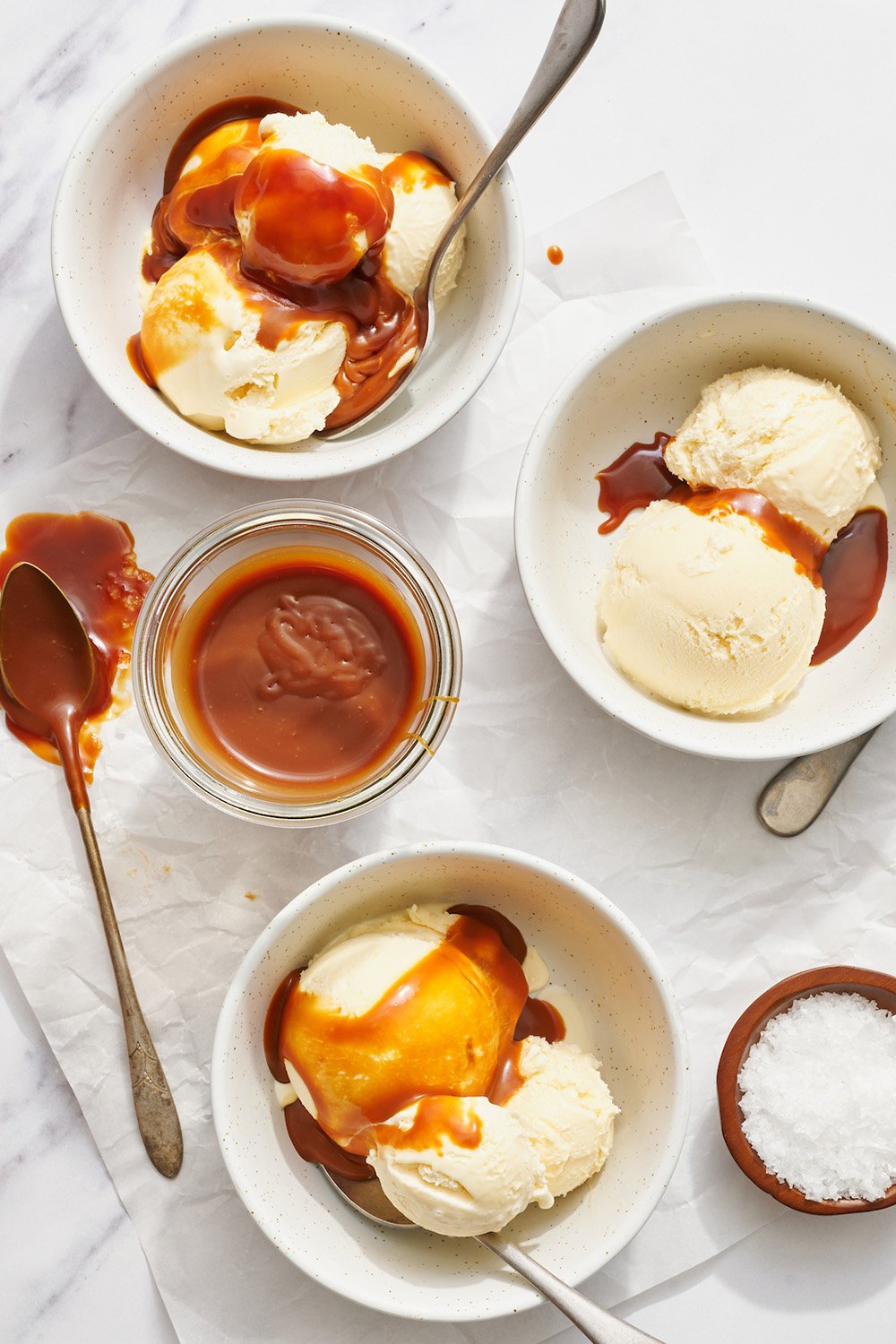
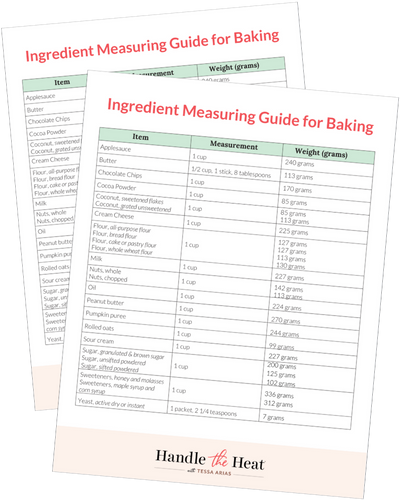
Free Ingredient Measuring Guide!
The key to consistent baking success is a click away. Sign up to get instant access to my printable Ingredient Measuring Guide now!
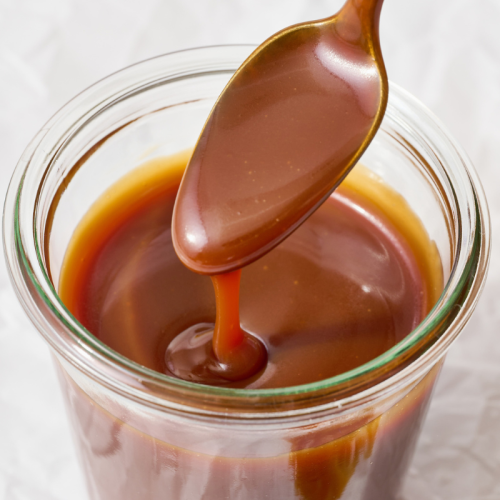
Homemade Caramel Sauce
Email This Recipe
Enter your email, and we’ll send it to your inbox.
Ingredients
- 1 cup (200 grams) granulated sugar
- 5 tablespoons (71 grams) unsalted butter
- ½ cup plus 1 tablespoon heavy cream
- 1 teaspoon flaky sea salt (optional)
Instructions
- In a dry, medium-sized stainless steel saucepan or pot, cook the sugar over medium heat.
- Swirl the pan occasionally, until the sugar melts and begins to turn a deep golden color, about 5 to 6 minutes.
- Turn off the heat and whisk in the butter until melted.
- Whisking constantly, gradually add the cream. Whisk until the mixture is smooth. If the caramel seizes or clumps of sugar form, continue heating on low heat until they melt back into a smooth sauce.
- Remove from heat and pour through a fine mesh strainer into a heatproof container.
- Stir in the salt (if using).
- Let hot caramel cool until warm and thick. Use or store in an airtight container in the fridge for up to 2 weeks.
Recipe Notes
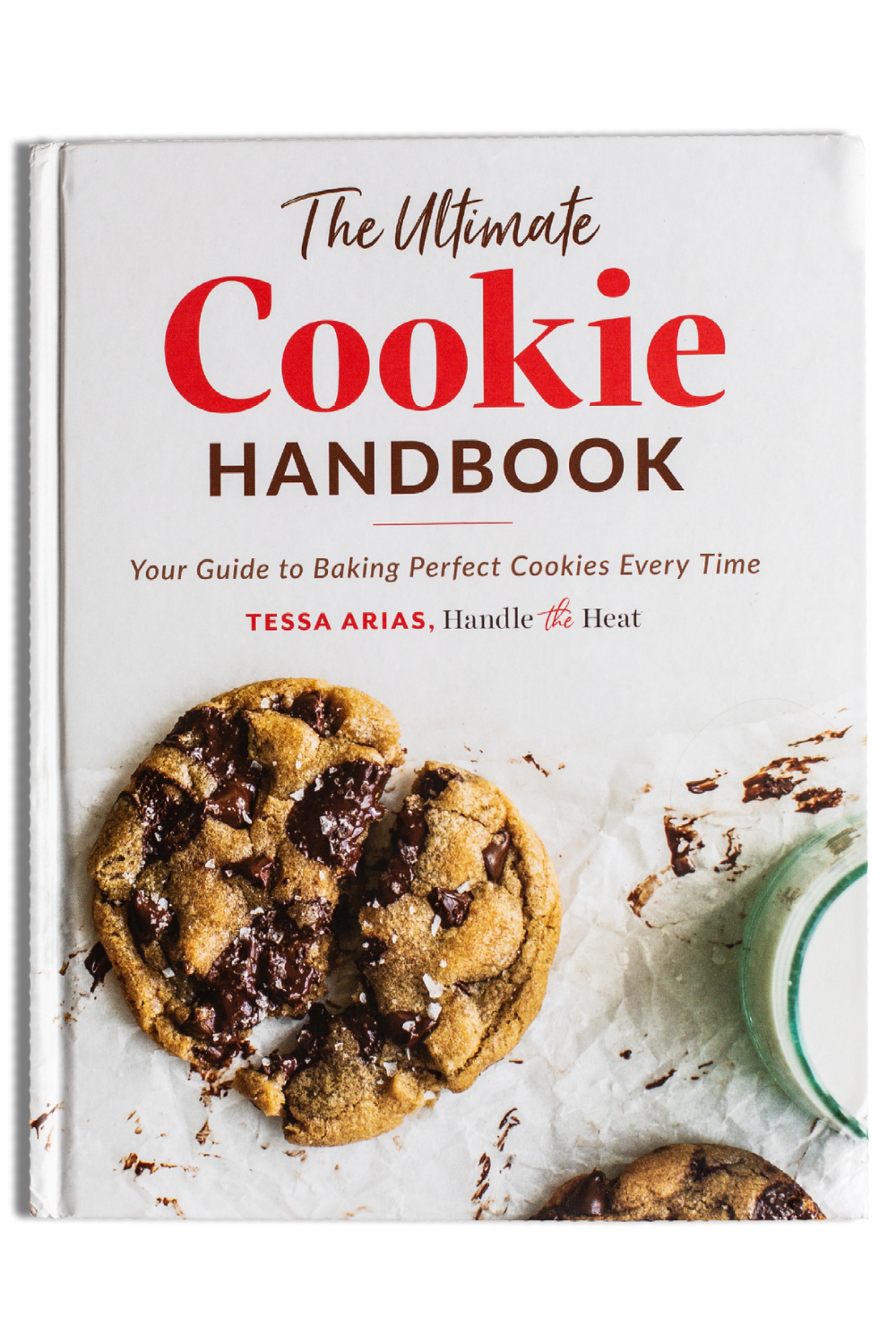
The Ultimate Cookie Handbook
Learn the sweet SCIENCE of cookie baking in a fun, visual way to customize your own recipes frustration-free. Plus, my best 50+ homemade cookies!
This post was originally published in February 2014 and has been updated with new photos and recipe improvements. Photos by Joanie Simon.
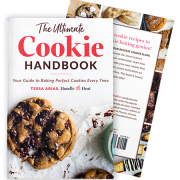
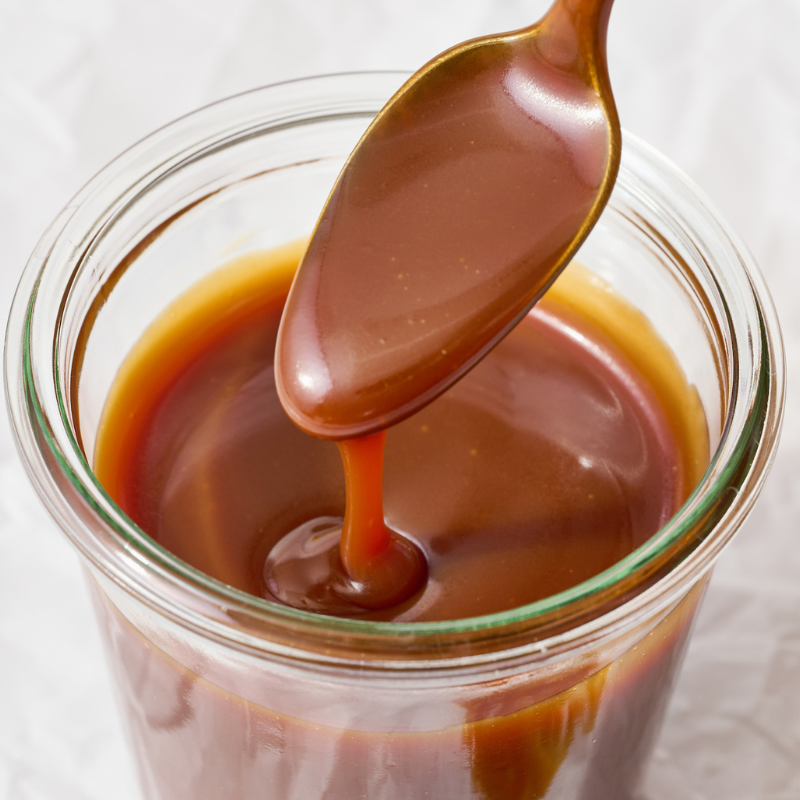
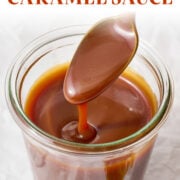
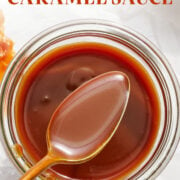
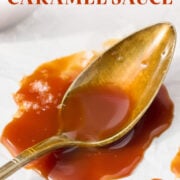
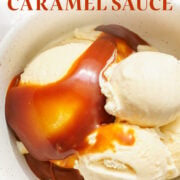
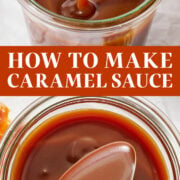
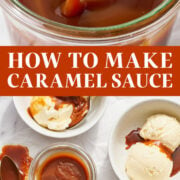
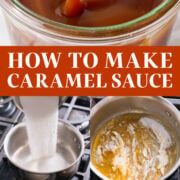
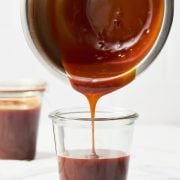
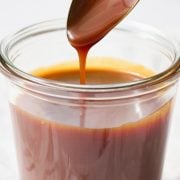
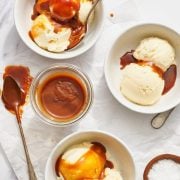
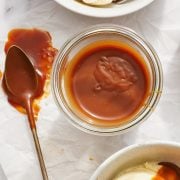
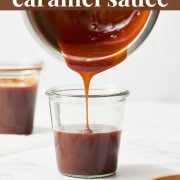
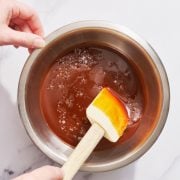
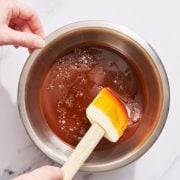
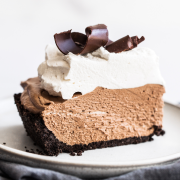
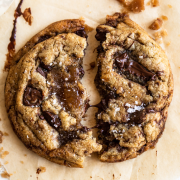

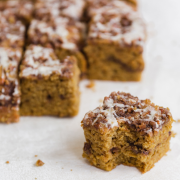
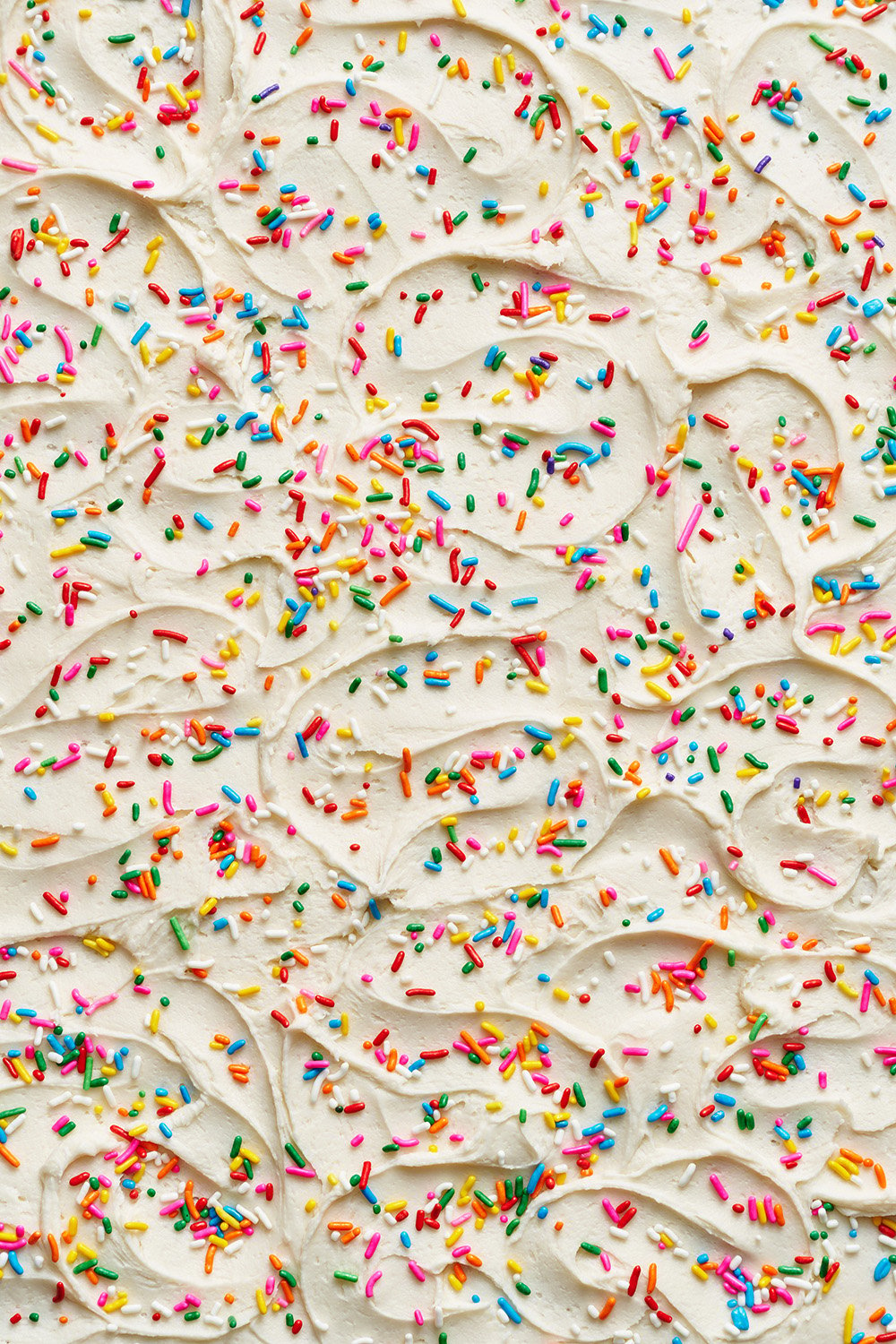
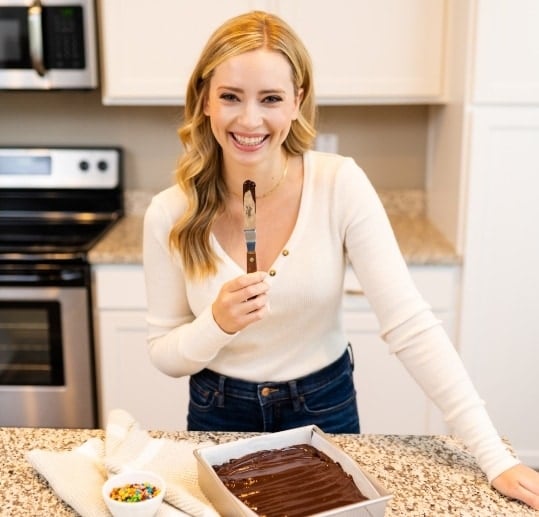

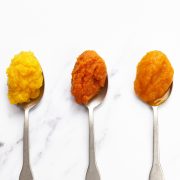
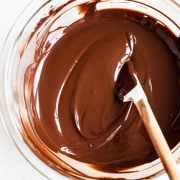
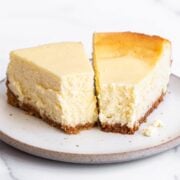
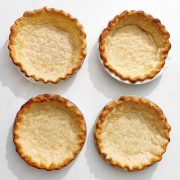








Thanks so much for posting this!! The video was so helpful. I made a vegan version with Earth Balance and Almond Milk (I have a dairy allergy). My first batch was less thick than yours, but I am going to keep working with it. It definitely takes a few times to learn when to take the sugar off the heat without having an overcooked taste. But this method works better than all the others I have tried. I love that it doesn’t crystalize in the fridge. YUM!
Wonderful, Lynsday! Thanks for your helpful tip for making the recipe dairy-free.
vypadá to skvěle, zítra hned zkusím, vřele děkuji za recept
An ice cream snack attack led me to this recipe and it turned out so great and it really is so easy! I recently stumbled upon your site and I absolutely love it, thanks for all the awesome recipes!
That’s so awesome! Thanks so much 🙂
hi i m going to try this can we make it with whole milk instead of cream? plz do answer
No, you should use cream! The caramel needs the fat from the cream.
For anyone who was wondering about making this vegan, I used almond milk and Earth Balance and it turned out great!
Thanks so much for sharing! Good to know.
This sauce is fabulous and I love how easy it is! It will replace the difficult caramel filling I was making for the Chocolate Salted Caramel Cupcake recipe from a Pinterest recipe. Your recipe tastes the same but is much easier. This caramel sauce was a huge hit on the Ice Cream Sundae Bar I had for my church dinner last night. Thank You and keep the great recipes coming!
You make it look so easy! Homemade caramel is the best!
I’ve been making caramel sauce for years and never knew about straining it! Does tempature alter if I use an anodozied pot to stainless? The videos are great by the way 🙂
Probably a little! I know my anodized pot takes longer to heat than my stainless one.
Concerning making a non-dairy version, I think that almond milk should work fine. I recently made a caramel sauce with whole milk instead of heavy cream. I don’t see why you couldn’t substitute almond milk in this step. If you can find it, califia makes a very creamy almond milk that’s really good.
I melted the butter and milk together in a sauce pan and then whisked the warm milk/butter into the caramel once it had reached a pale yellow/gold. Instead of turning the heat of, I left it on and thickened the sauce further. The caramelization continues in this step, which is why I added the milk/butter earlier than Tessa’s recipe asks for.
Homemade is the best and so easy!
This looks like one of the simpler caramel recipes I’ve seen (no candy thermometer, yay!). Is there any way to make it non-dairy? I know almond milk is not a great sub for heavy cream, but can it be done? I think I could use Earth Balance instead of the butter, it’s the heavy cream that has been my stumbling block (in part because I also have to avoid soy and corn, so most non-dairy creamers are a no-go.
I’ve never attempted to make a non-dairy caramel but you could certainly try. I can’t think of any particular reason why it wouldn’t work! If you do try it out please let me know how it goes, I’m sure other readers would love to know if it’s possible!
THANK YOU! The other day I was planning my weekend recipe creations and I wanted to do caramel sauce but I had never done it before…and now I know how! 🙂